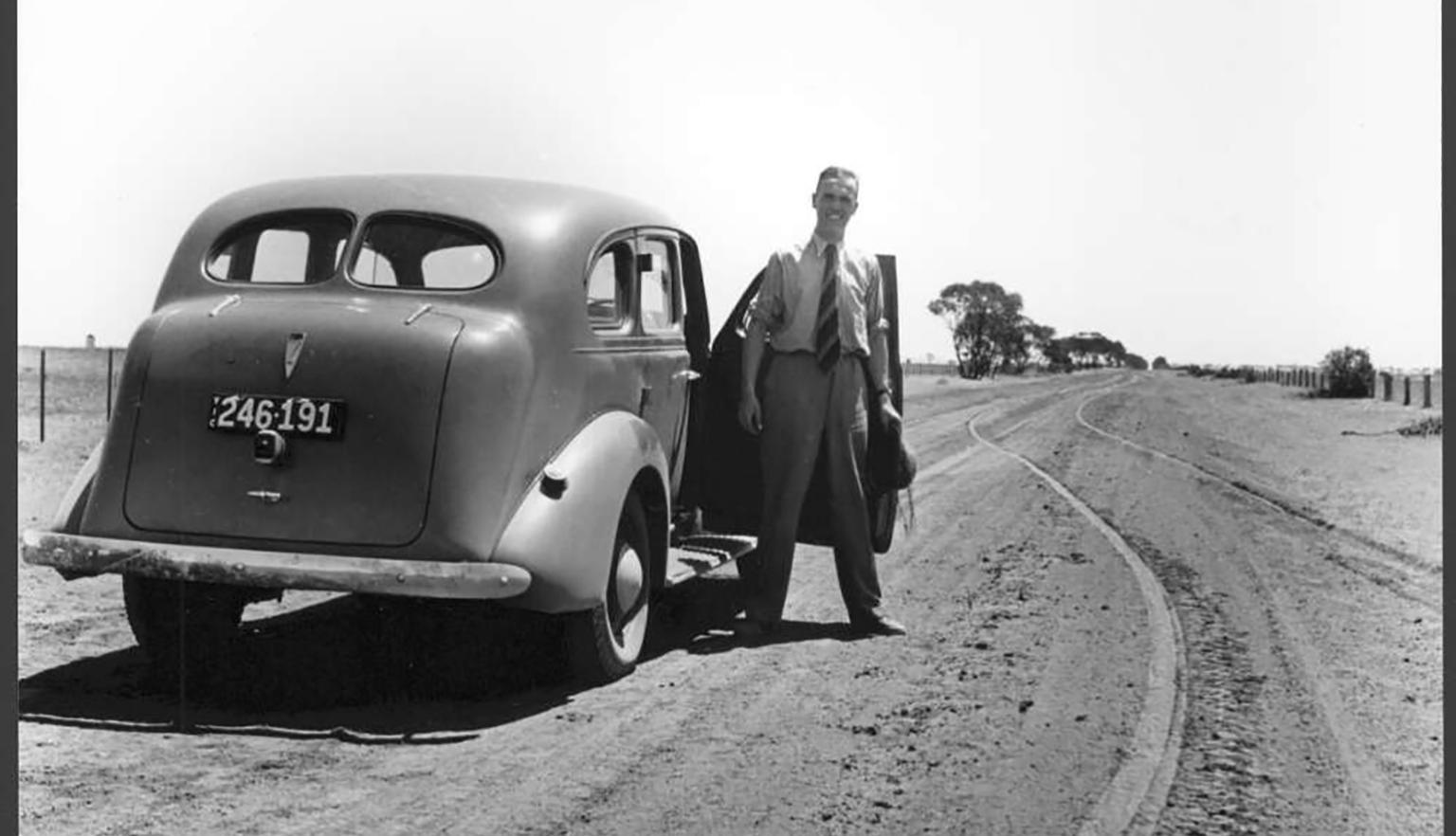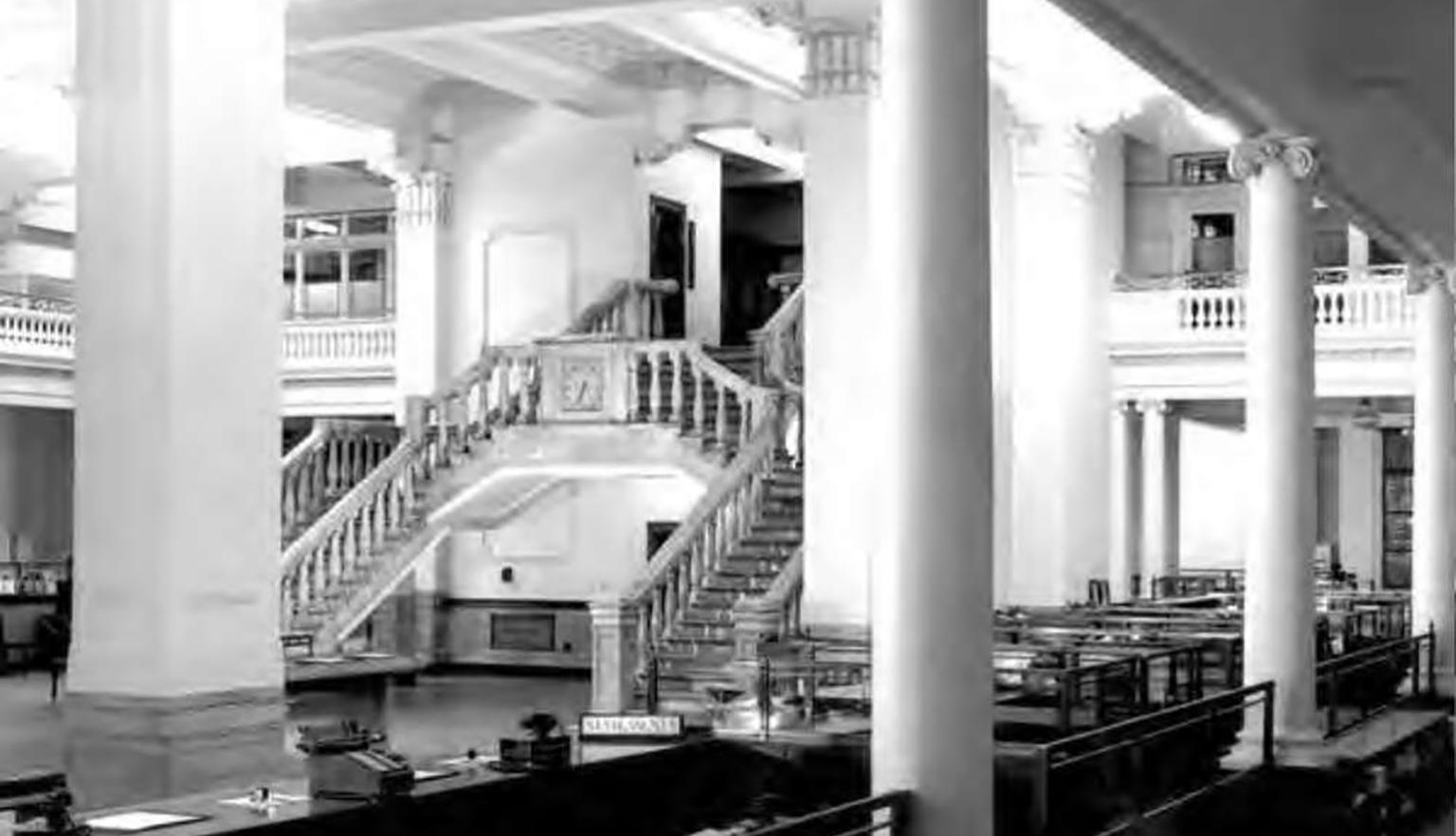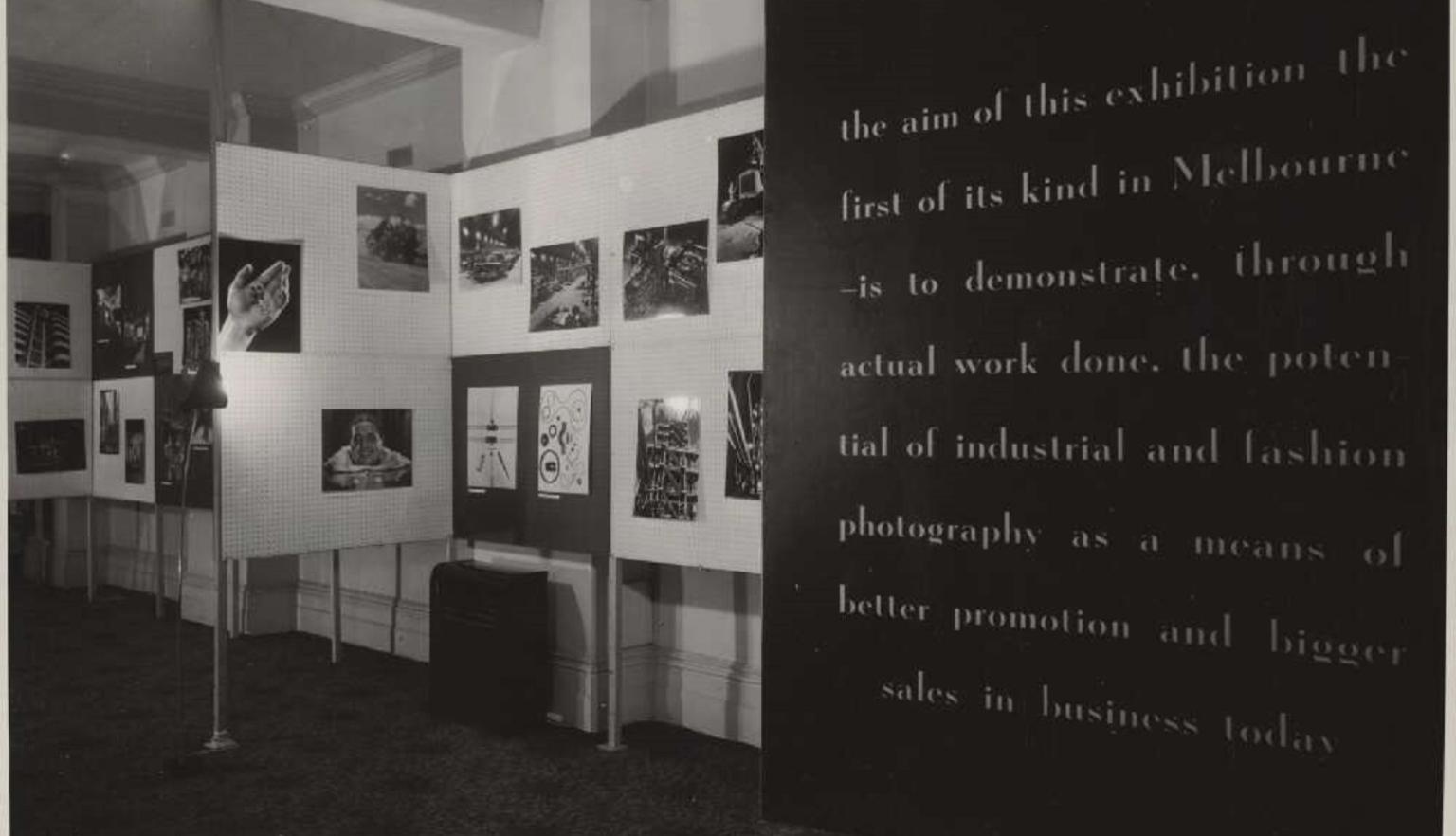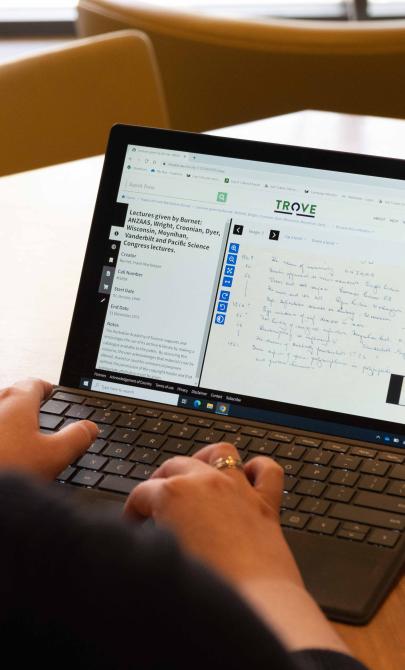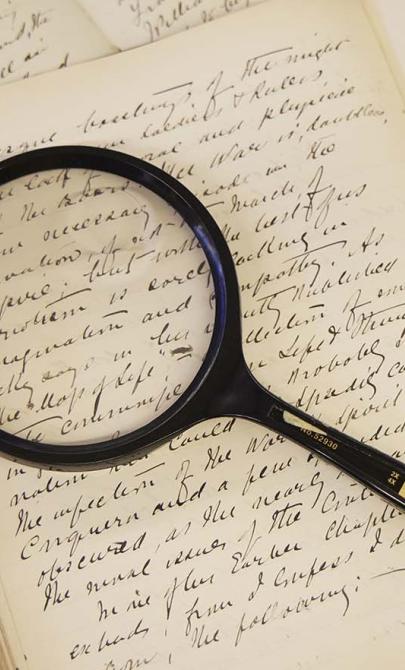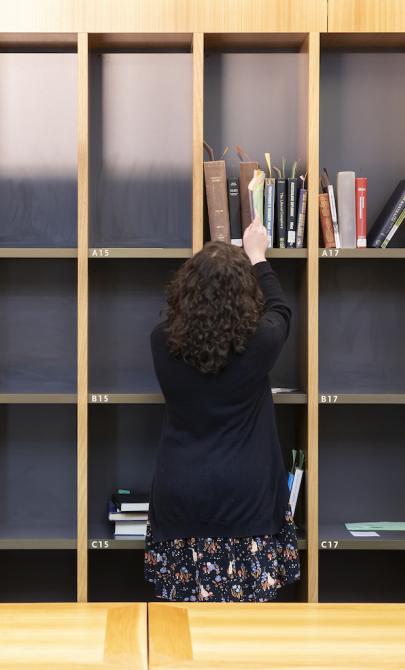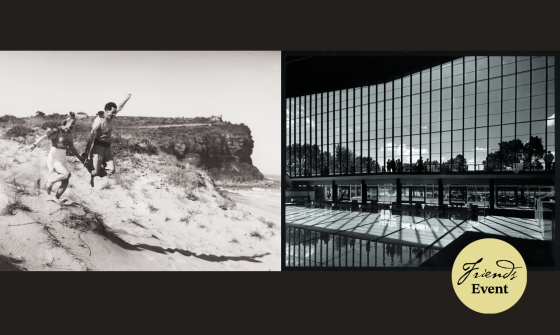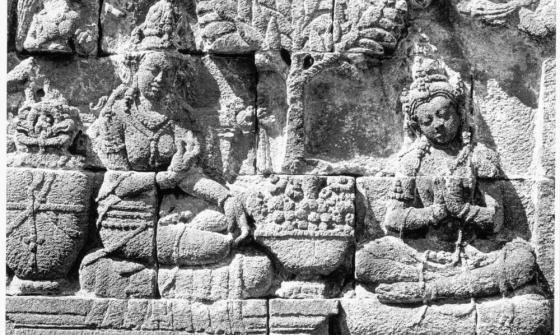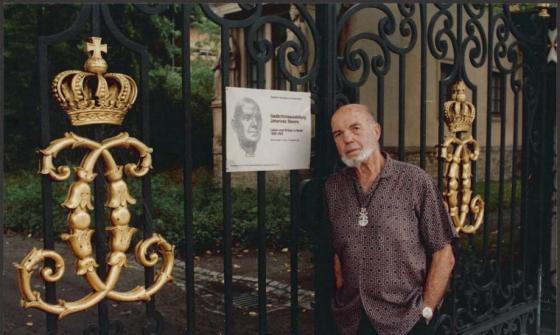Sievers Collection
Collection highlights
Key items in the collection
This collection hosts a range of formats, including:
The Sievers Collection includes important family papers, such as portraits and photographs, that date from the late 1600s to the mid-1900s. Highlights include watercolors, drawings, and sketchbooks by Sievers' grandfather, Carl Sievers; an account of his parents' world trip in 1909-10; memoirs of his father, Johannes Sievers; documents about his father's work in the German Foreign Office from 1918-33; and family history papers annotated by Johannes Sievers. There are also letters and many family photographs.
There are only a few papers from Wolfgang Sievers himself. The main records of his photography work are three job books covering 1938-94, along with letters, newspaper clippings, and documents related to war crimes and war criminals in Australia.
The Sievers Collection contains around 19,000 prints and 52,000 negatives and transparencies, making it the largest photographic collection at the Library. Most of these photographs were taken by Sievers between 1938 and 1991, mainly in black and white, with colour images appearing more often after 1970. The collection provides a remarkable record of Australian architecture, mining, and industry in the 20th century.
Architectural Work (1946-1973): Sievers worked with prominent architectural firms, capturing modern Melbourne buildings, including:
- National Gallery of Victoria
- Sidney Myer Music Bowl
- Olympic Pool
- Monash University structures
- ICI House
- Robin Boyd’s House of Tomorrow (1949)
- The Age Dream Home (1955)
He also photographed historical buildings and sites in Melbourne and other Australian cities, such as:
- Capitol Theatre
- Miranda shopping centre in Sydney
- Festival Hall in Adelaide
- Supreme Court in Canberra
Mining Photography: His mining photographs cover various Australian states, depicting locations like:
- Blair Athol coal mine, Queensland
- Moura coal mine, Queensland
- Comalco bauxite mine, Weipa
- Hamersley Iron mines, Dampier and Tom Price
- Mount Isa copper, lead, zinc, and silver mines
Industrial Photography: Sievers documented hundreds of industrial sites, including:
- Alcoa plant at Port Henry
- Ford Motor Company plants at Broadmeadows and Geelong
- General Motors Holden factory at Dandenong
- Babcock and Wilcox powerhouse at Dandenong
- Dunlop Australia factory at Bayswater
His work often highlighted workers in action, focusing on their skills and roles within the industry, following the Bauhaus principle of valuing the individual worker.
Other Notable Works: The collection also features a few works outside of architecture, mining, and industry, including:
- Photographs of Australian Aboriginal communities at Weipa in 1957
- Portraits of Australian servicemen from 1939-41
- Images from Sievers' travels, such as his visit to Colombia in 1977.
The collection includes several books, mostly in German, many of which once belonged to Johannes Sievers and date back to the early 1800s. Notably, there are several excellent publications about the architect and designer Karl Friedrich Schinkel (1781-1841), including four monographs written by Johannes Sievers.
About Wolfgang Georg Sievers
Wolfgang Georg Sievers (1913-2007) was born in Berlin. He attended the Emperor Frederick Gymnasium and other schools in Berlin. He got his first camera in 1928 and took many photographs during holidays in France and Italy. Although he wanted to become an archaeologist, Nazi racial laws forced him to leave university in 1933. He then turned to photography, working in Portugal from 1934 to 1935. After returning to Berlin, he studied and later taught photography at the Contempora Lehratelier für neue Werkkunst, where he was influenced by the Bauhaus School. Sievers emigrated to Australia in 1938 to escape discrimination and possible persecution due to his Jewish heritage.
Career in Australia
Upon arriving in Australia, Sievers established a photographic studio in Melbourne, focusing on industrial, architectural, and advertising work. He served in the Australian Army from 1942 to 1946. As his reputation grew, he received assignments in Europe, Asia, South America, and the United States. In 1955, he photographed the work of architect Aalto Aalto in Finland. Until the late 1960s, he primarily worked in black and white, capturing subjects like:
- Heavy industry and engineering
- Light industry
- The car industry
- The Snowy Mountains Hydroelectric Scheme
- Mining and food industries
- The South Australian wine industry
- Commonwealth Aircraft Corporation
- Oil and textile industries
- Construction, science, and research
- The University of Melbourne and Monash University
Exhibitions and recognition
Sievers’ work has been featured in numerous exhibitions, including those organized by the Department of Trade in various countries. In 1953, he and Helmut Newton held a major exhibition in Melbourne titled "New Visions in Photography". The following year, Sievers had a solo exhibition in Hobart. A major retrospective was held at the National Gallery of Australia in 1991-92, and some of his early work was displayed in Berlin in 1992 in memory of his father. Another significant exhibition took place in Lisbon in 2002. Describing himself as "fiercely Australian but also fiercely European", Sievers was made an Officer of the Order of Australia in 2003.
Background to the collection
We purchased several sets of photographs from Wolfgang Sievers between 1996 and 2001. In March 2002, we signed a contract to acquire his entire photographic archive, which we transferred in 2002-2003. In 2008, we received his family portraits, photographs, manuscripts, letters, and books, which he bequeathed to us.
The Wolfgang Sievers Collection is part of the Pictures Collection, where his photographs are being catalogued and digitised.
The family papers, letters, photographs, drawings, and paintings are in the Manuscript Collection at Acc 08/70. Use the finding aid.
Most of the publications, including those on Friedrich Schinkel, are now in the General Collection.
Another collection of photographs of Wolfgang Sievers is held in the State Library of Victoria.
This guide was prepared using these references:
- Helen Ennis, Sievers: images of Australian industry, National Library of Australia magazine, vol 3 (3), Sept. 2011, pp. 21-27.
- Helen Ennis, Wolfgang Sievers, National Library of Australia, Canberra, 2011.
- Gabriella Coslovich, Photographer who championed human rights to the end, The Age, 9 Aug. 2007, p. 3
- Freda Freiburg, Upstaging the history of Australian photography: the case of Wolfgang Sievers, Photofile, vol. 6 (1), autumn 1988, pp. 4-6
- Linda Groom, The dignity of man as a worker: the Sievers Archive, National Library of Australia News, vol. 13 (4), Jan. 2003, pp. 6-10
- Robert McFarlane, Refugee awakened a sleeping giant, Sydney Morning Herald, 4 Jan. 1992, p. 50
- Barry York, Oral history interview with Wolfgang Sievers, March 2000, ORAL TRC 4549
First posted 2008 (revised 2019 and 2024)
